REINFORCED FIBERS: COLUMN
ABSTRACT
The Workshop was an experiment aimed at the application of topological optimization and localized reinforcement on elements of a framed structure. It attempted to explore possible strategies to reduce material consumption by optimizing the design of structural elements and then further strengthening the main stress / load carrying areas by reinforcing them with additional tensile or compressive reinforcement. For the purpose of this workshop a column loaded by a set of crossbeams and a slab was considered. The workshop was then divided into three stages. The first stage involved designing the structural element and optimizing its material usage. The second stage was milling the redesigned component from a wooden section. The last stage involved reinforcing along the main stress lines of the structural element using a mixture of tensile and compressive reinforcement. In this section we shall discuss in detail the process of designing and fabricating a column.
LOAD CONDITIONS
The column and a part of the beam and slab are isolated to create better conditions for exploration. This not only helps identify the forces but also simply the forces acting on the column which helps us predict the transfer of forces as well as key stress areas. A load of 3000N is assumed to act along the vertical axis of the column. A study of the principal stresses acting of the column shows greater stress acting at the point of contact with the beam and with the foundation.
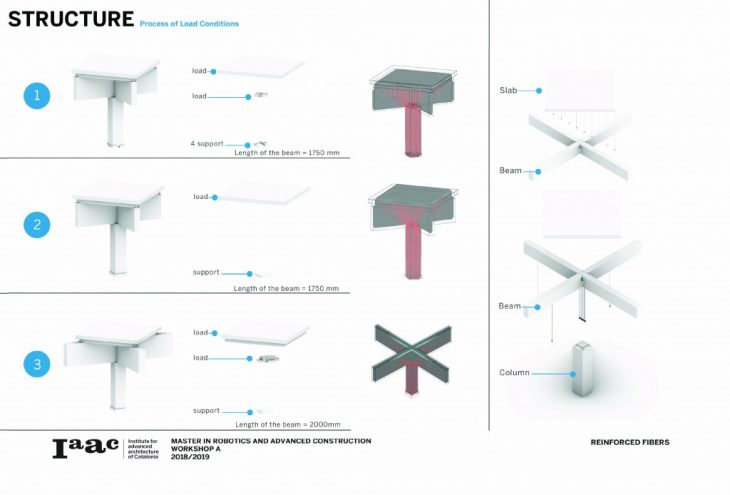
TOPOLOGICAL OPTIMIZATION
To optimize the material distribution in the column, excess material is sculpted digitally using topology optimization. Two software packages are used to compute the optimized topology for 40% of the mass of the initial cuboid column. The first set of computation is done on millipede, a Grasshopper-plugin and the results are compared to that of a commercial shape-optimization software, Autodesk Fusion 360.
Fusion 360 is a cloud-based platform which means that its possible to run multiple simulations with varying parameters at once. The iterative solver computes the mass beginning from 100 % while reducing mass down to the target density (40%. In our case). This enables the user to compute the optimized topology only once and allowing the user to change the target density at a later stage using the same results. Finally, the algorithms keep in mind the manufacturability of the final geometry, bridging the gap between design and fabrication. Millipede performed satisfactorily in comparison to the results on Fusion. Hence, in order to ensure a mesh coherence amongst the other elements of the structure, the millipede output was used for the final fabrication phase.
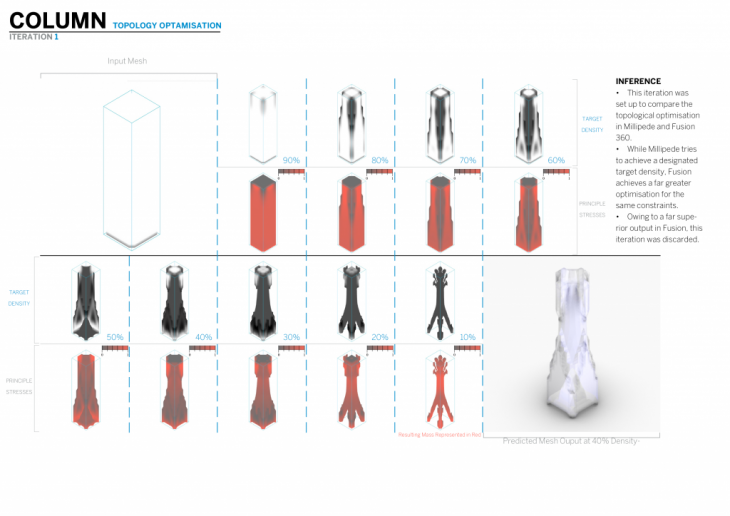
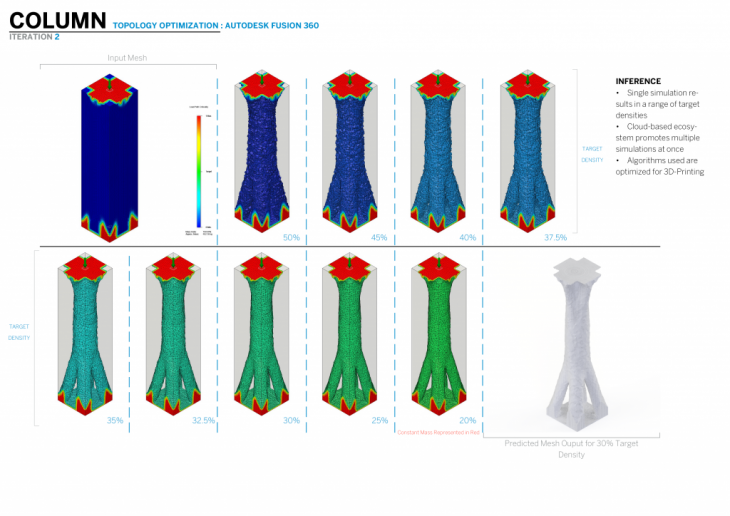
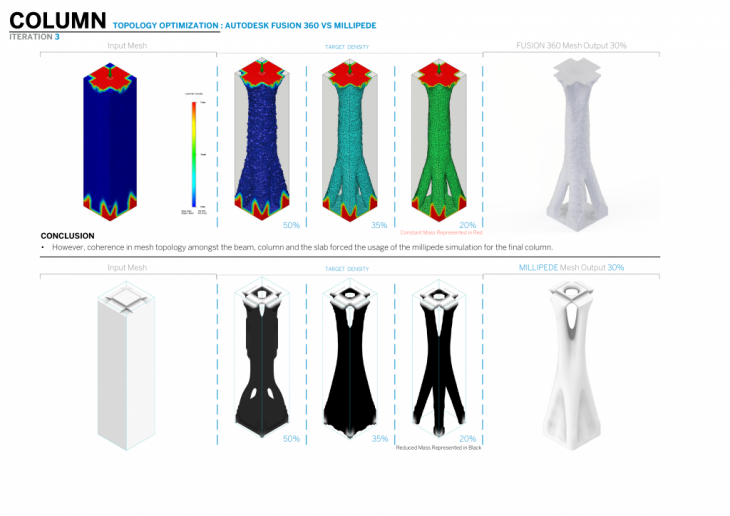
CNC MILLING STRATEGY
The milling of the optimized column on a 3 axis CNC router came with its own set of challenges. The initial strategy was to mill the column th 2 parts. As the column design was symmetrical, the same strategy was used to mill the column’s two halves. But the lack of a sufficently large milling bit resulted in each half being divided into 3 sections, these sections were milled from both sides using a CNC machine in order to be able to achieve the hollow spaces in the design. Eventually, a total of 6 sections were milled and glued together forming the final structure of the column.
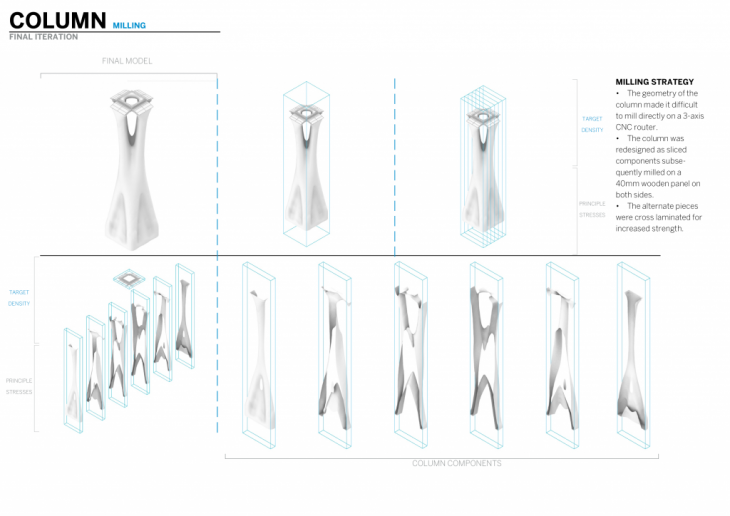
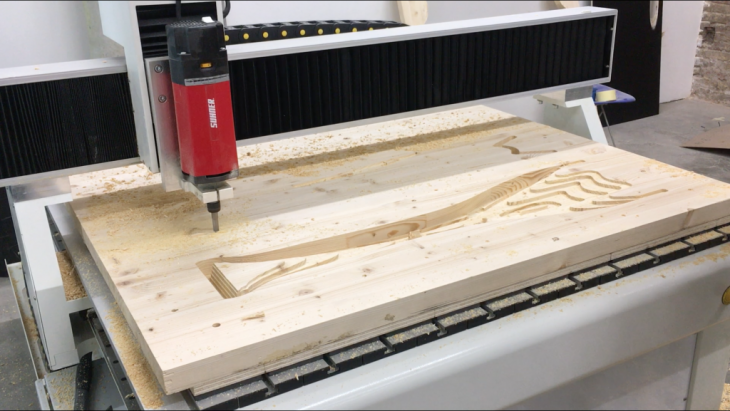
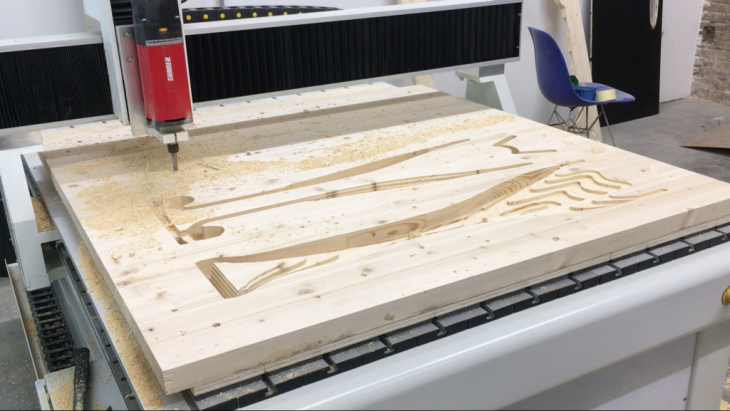
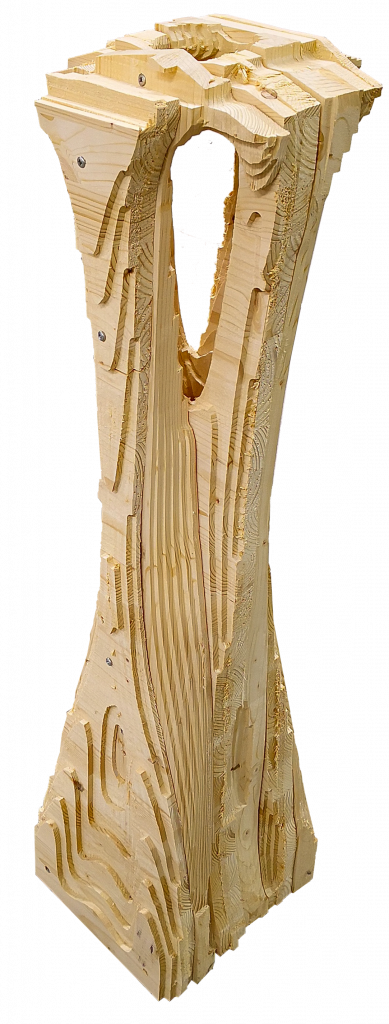
REINFORCEMENT
The reinforcement was to be laid along the main stress-lines that were milled on the surface of the column. This would result in providing additional compressive and tensile strength along these key areas. The key goals of the reinforcement was to reduce weight and cost of the overall design. For this exercise, a mixture of fillers / fibers in resin was utilized. In an attempt to identify the right composition of reinforcement numerous tests were conducted in a controlled environment.
Compressive resin mixes a base resin with a catalyst and a filler material like clay, wood dust or aerosil. Polyester resin is in general a cheaper option from epoxy resins, usually its mixed with a 1% -4% catalyst mix. 2% being a usual option.
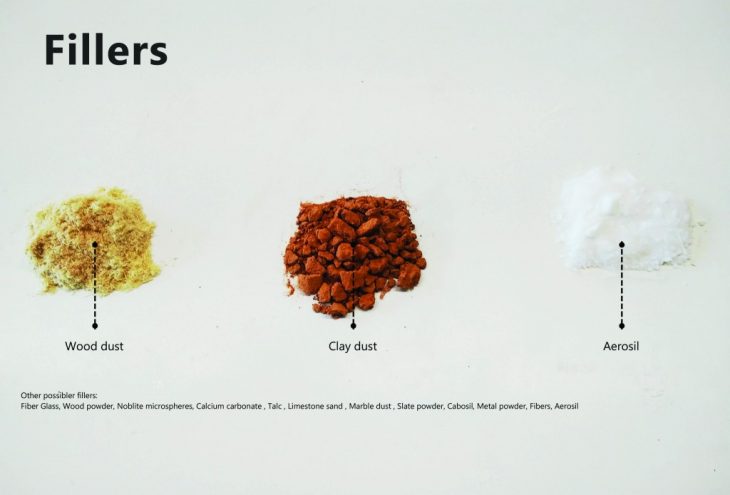
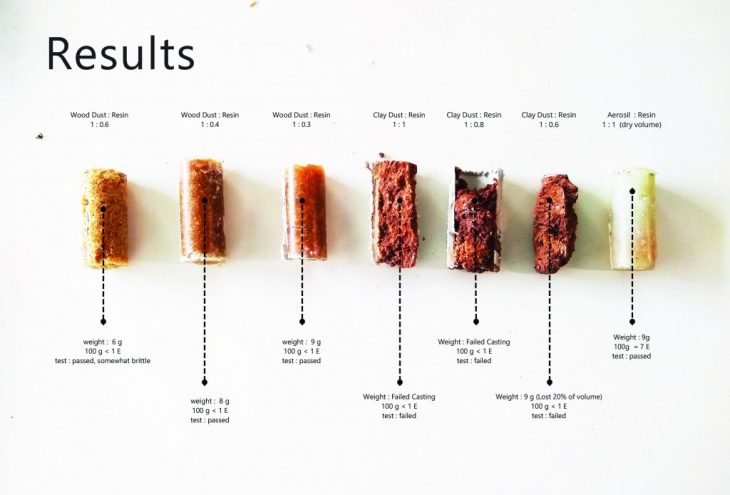
Tensile resin mixes a base resin with a 2% catalyst / hardener and glass fiber to improve tensile conditions as required. This resin was largely used in beams and slab.
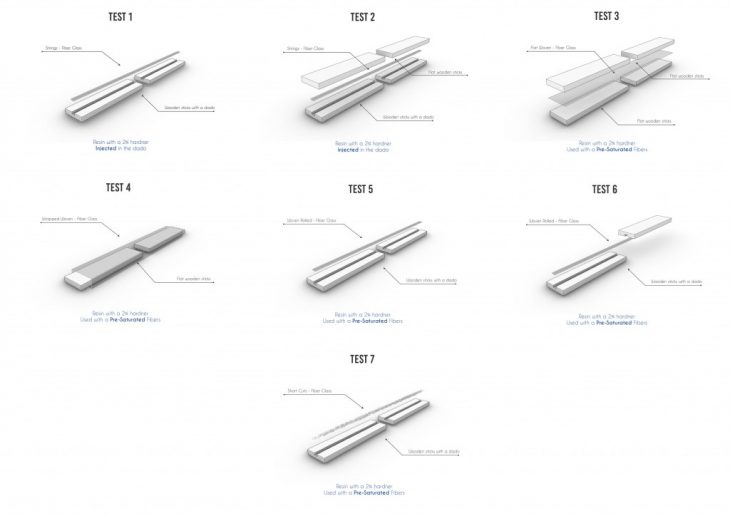
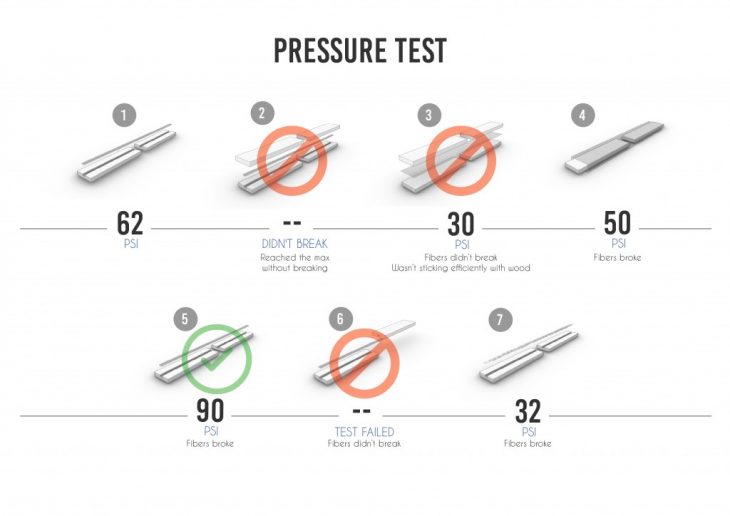
CONCLUSION
This exercise was a small step in an attempt to guide the discussion within architectural practice regarding resource conservation and the use of computation tools to produce efficient designs and structures. While the conditions to use topological optimization is not ideal for subtractive manufacturing like CNC milling, it can be used with greater efficiency in additive manufacturing processes like 3D printing. This exercise, if implemented on a larger scale can not only help reduce the material consumed which can lead to lighter structures but also effectively reduce the cost of the project. The next step for the project will be to subject the design to real load conditions and observe the performance of the design.
Reinforced Fibers is a project of IaaC, Institute for Advanced Architecture of Catalonia developed at Master in Robotics and Advanced Construction (M.R.A.C.) in 2018 by,
Students: Apoorv Vaish, Luis Arturo Pacheco, Omar Geneidy, Owase Ansari, Soroush Garivani, Sujay Kumarji
Faculty: Dir. Aldo Sollazzo, Eugenio Bettucchi, Kunaljit Singh Chadha, Armin Akbari, Sujal Kodamadanchirayil
